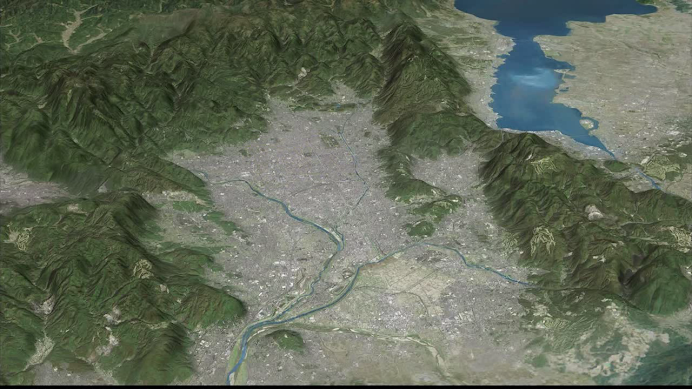
The Ekijinjasai or The Festival for the Shrine of the Plague God takes place on July 31st at Yasaka Shrine. This small shrine can be found directly after one enters the west gate, the main gate of Yasaka Shrine. This festival is dedicated to the worship of Somin Shorai. One story has it that Gozu Tenno was looking for a place to stay one night and came to a house. At the first house of Kotan Shorai he was rejected. At the second house Gozu Tenno, the ox-headed god, was warmly received by Kotan's poorer younger brother, Somin Shorai. For this hospitality, Gozu Tenno gave Shomin Shorai a special grass to ward off disease, this was chigaya grass. Somin Shorai wore the grass around his waist and survived a terrible plague. The plague was most probably small pox which during the 7th to the 11th century wreaked havoc on the Japanese population. In the worst years killing up to 20% of the population. The same chigaya grass can be seen in the large wreath above. It is also what is inside the chimaki charms that are sold at Gion Festival. That is why many chimaki charms say, "We are descendants of Somin Shorai." Chigaya grass is called Cogon grass in English.

One small note about Gozu Tenno. He is the god of Gion Festival and is the god who is carried in the mikoshi, the portable shrines, on the 17th and the 24th. This god is originally from India but has undergone many changes on his journey through Tibet and China. Sometimes Gozu Tenno is associated with Susanoo. Susanoo may have been added later as a major Shinto god or as the shinto side of Gozu Tenno who is originally a Buddhist god. Why is there a Buddhist god at Yasaka Shrine? Before the Meiji Period, pre 1868, Yasaka Shrine was a Buddhist/ Shinto complex as almost all major shrines were. But that is a story for another post. The final festival of Gion Matsuri is one filled with history and legend. At 10:00 am, you can join this festival that honors Somin Shorai. The priest will offer some gifts and prayers, and then all attendees will walk through the wreathe to protect themselves from disease.
The question for this post, is where can I get more detailed information about the process of Susanoo being added as the Shinto aspect of Gozu Tenno. Has anyone written about this in detail?

No comments:
Post a Comment